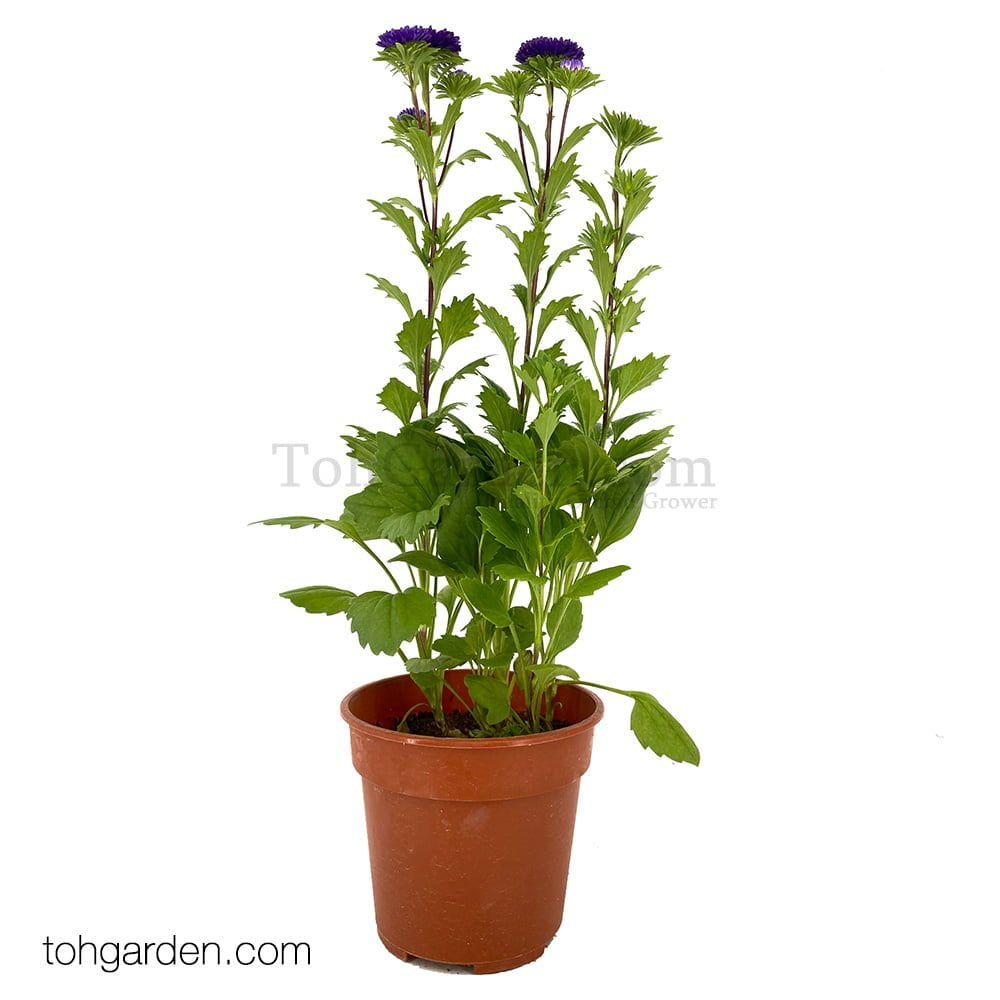Only logged in customers who have purchased this product may leave a review.
Purple Aster
Botanical Name: Symphyotrichum spp. (formerly Aster)
Plant Type: Flower
Sun Exposure: Full Sun, Part Sun
Bloom Time: Summer, Fall
Flower Color: Blue, Pink, Purple, Red, White
Hardiness Zones: 3, 4, 5, 6, 7, 8
Asters are daisy-like perennials with starry-shaped flower heads that range from white to blue to purple in hue. They add a lovely touch of beauty to the garden in late summer and fall, when many of our summer flowers have faded. How to Grow Asters in Your Garden!
Asters also attract bees and butterflies, providing the pollinators with a valuable late-season nectar source. Because of the Aster’s late bloom, they are frequently referred to as “Michaelmas daisies,” which alludes to the holiday of the same name, which comes on September 29.
The plant is adaptable and may be utilized in various settings, including borders, rock gardens, and wildflower gardens, to mention a few. The plant’s height can range from 8 inches to 8 feet depending on the type, so you should be able to locate one suited for your yard.
PREPARING A PLANTING SITE
- Asters enjoy cold, wet summers, particularly cool night temperatures.
- Plant asters in locations that are shaded from the scorching midday sun in warmer regions.
- Choose a location that receives full to partial sun.
- The soil should be wet yet well-drained, with a loamy texture.
- Before planting, incorporate compost into the soil.
- While asters may be produced from seed, germination is not always uniform. Therefore, to imitate winter dormancy, start the seeds indoors over the winter by planting them in pots or flats and storing them in the refrigerator for 4 to 6 weeks. They require this time of cooler temperatures to begin germination.
- Sow seeds one inch deep in the soil in a sunny location in your home. Plant young plants outside in the spring once the risk of frost has passed.
- Planting young asters is best done in mid-to-late spring. When fully grown, potted asters become available in your region; they can be produced (typically in the fall).
- Asters should be spaced 1 to 3 feet apart, depending on the variety and size expected.
- Plants should be given lots of water when they are first planted.
CARE REQUIREMENTS
Water: They require minimal watering once established unless conditions become exceptionally dry and the plants exhibit indications of stress. Because cultivars have shallow roots, they may require more frequent watering throughout the summer, especially if planted in well-drained soil. Maintain moist but not saturated soil. Mulching to decrease water loss is a fundamental disease prevention approach.
Fertilizing: Some gardeners believe that a layer of organic mulch will provide all of the nutrients they require. In contrast, others recommend a modest application of organic fertilizer at the start of their growing season. However, fertilizer should not be used once the plants bloom since it may decrease the bloom period.
$15.00 $16.35 (Including GST)
Out of stock

















Reviews
There are no reviews yet.